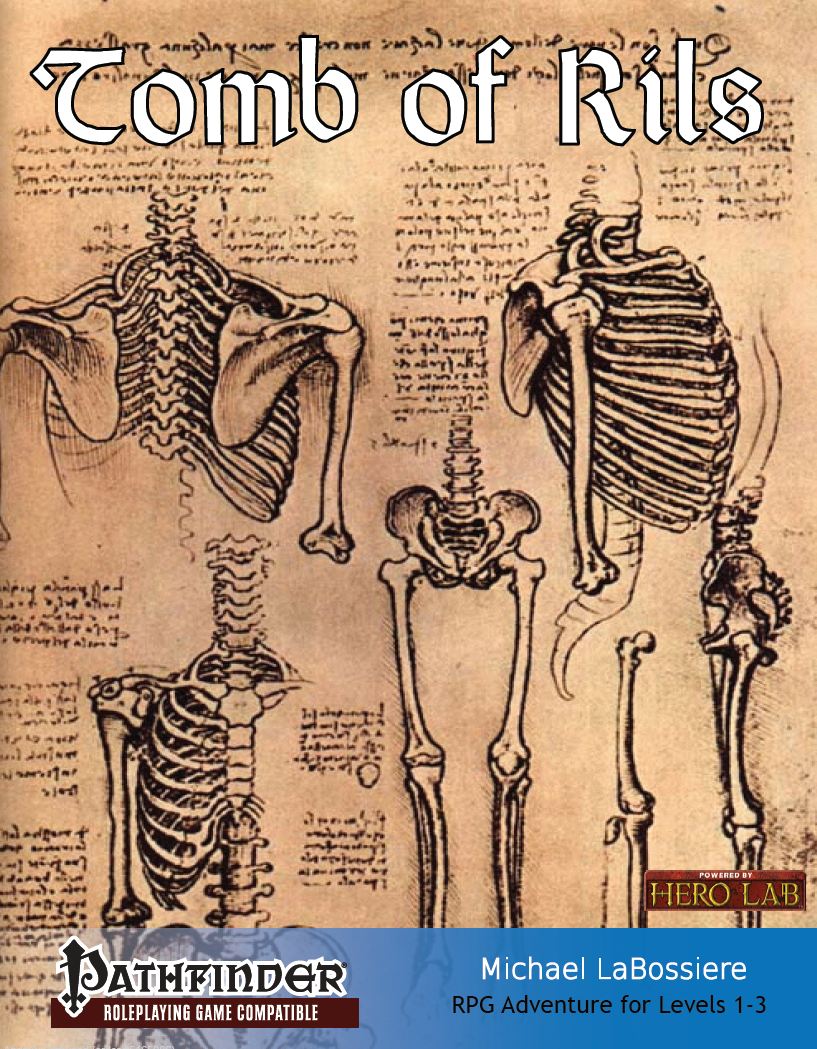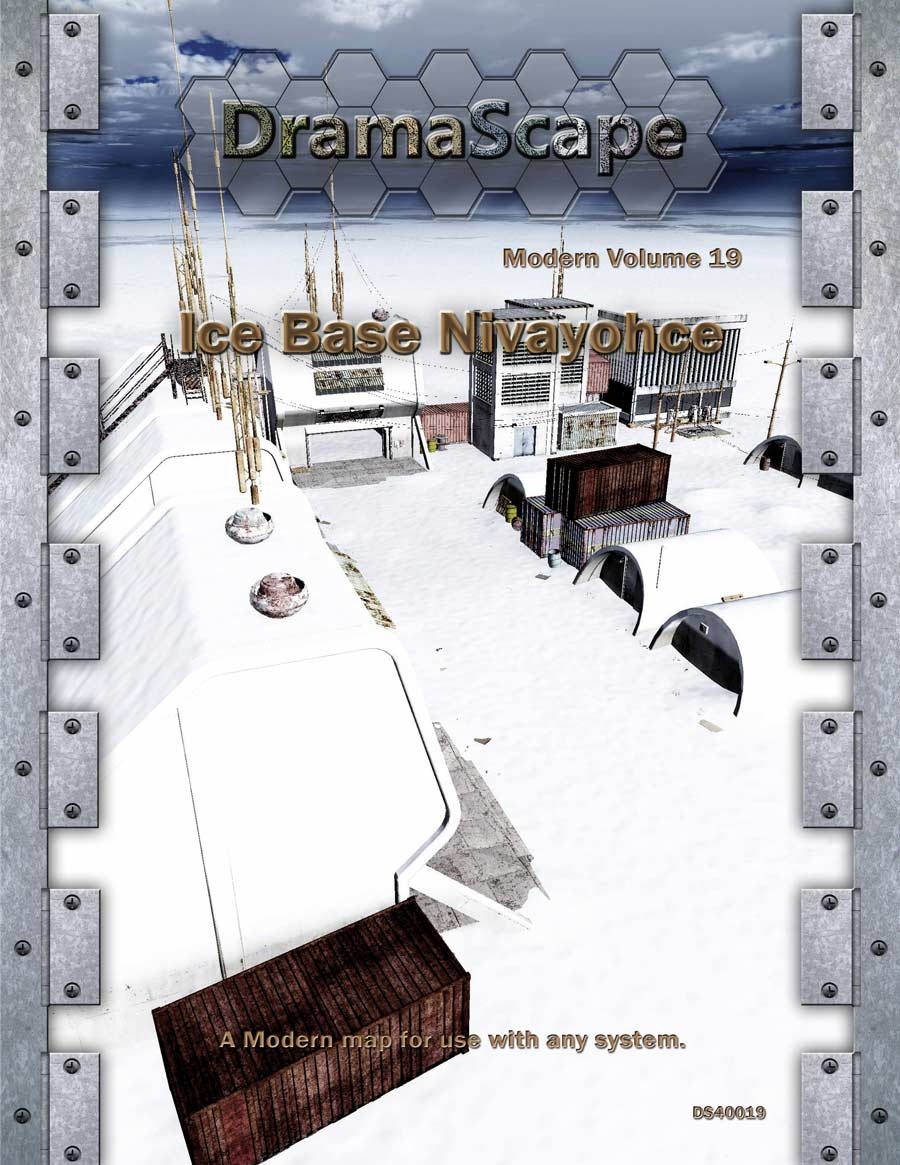 Treasures heaped so high they’d make a golden dragon weep. A gamemaster can sometimes find such a potential trove, not in the fictional content of some forgotten dungeon, but in the words, setting and ingenuity of a written adventure. Other times, you might come across something more commonplace and uncover a gem or two – but you have to spend the time digging for it. In the end, it might feel like you could have spent the time searching better if you’d come up with the adventure yourself.
Treasures heaped so high they’d make a golden dragon weep. A gamemaster can sometimes find such a potential trove, not in the fictional content of some forgotten dungeon, but in the words, setting and ingenuity of a written adventure. Other times, you might come across something more commonplace and uncover a gem or two – but you have to spend the time digging for it. In the end, it might feel like you could have spent the time searching better if you’d come up with the adventure yourself.
Well, I fear the Tomb of Rils might lie in this territory…
Form
Tomb of Rils is a Pathfinder Roleplaying Game Compatible Adventure written for low level characters by Dr. Michael C. LaBossiere. The adventure caters for Character Levels 1 – 3.
Of the 16-pages making up this adventure, the Open Licence consumes two, and three versions of the Tomb map take up three further pages. The first three pages contain the cover, a title page, and a table of contents. All told, the adventure has 50% of the available space.
The three maps are all renditions of the same map – one sketched in pencil, one a simplistic computer rendered grid map, and the final one a more colourful version with textures, possibly intended for use in an online dungeoneering tool. All feature numbered references that match the content of the adventure.
Features
The Tomb of Rils is an adventure filled with unrealised potential. At face value, this is a straightforward dungeon raid on a railroad track through a dozen rooms. The rooms offer challenges throughout, primarily in the form of traps – squeezing a dozen into the available rooms, and a couple of situations that scream trap in all but name and mechanical presentation.
Where the potential lies is in what’s left unsaid or half-hinted.
The adventure starts with a History and a tale of misinterpretation. Rils was, or perhaps is, a necromancer. However, such a moniker might not serve as fitting for someone as wily and studied as he.
Some necromancers pursue the secret of eternal life with brash behaviour and a helter-skelter ride approach certain to draw attention. They seek power through acts and rituals so obscene and public they can only serve as a beacon to the nation’s greatest heroes. Such necromancers might as well have a ‘Kick Me’ sign embroidered on the back of their ceremonial robes, between the grinning skulls and the pentagrams. Ril chose a different path.
Rils – and the possibility exists that he might be one person or could be the accumulated lore associated with several similar practitioners – sought the ascension to eternal existence through a more benign and even thoughtful approach to necromancy. He travelled the world seeking out ancient lore, forgotten artifacts, and strange rites, piecing together the puzzle of Dark Arts without bothering with the troublesome public sacrifices or invasions of skeletal minions. When he set up shop to study, he did so in out of the way places and kept himself to himself. The existence of any legends about Rils at all suggests he found some measure of success in his restrained approach.
When he found a clue to the ultimate secret of immortality in undeath, he would set up a tomb, a cache of his treasured research and possessions. In this dark, secluded locale he would practice his arts and then move on. Left well removed from civilisations, these tombs would keep Rils’ possessions safe and avoid unnecessarily hurting random sheep herders or errant rangers. Rils could not be considered a good man, but he didn’t seemed to care enough about the safety of others to take careful steps wherever he paused to lay his staff.
I find that interesting. I like this idea. Why have just the goodly sages and anti-social wizards keep themselves out of the way in pursuit of greater knowledge? Why not the careful practitioners of undead arts?
After the History, the Getting the Player Characters Involved is definitely a notation of the unsaid. The author offers a single option, split in two – either a spellcasting character already in possession of a map, or a map discovered as part of a treasure in a previous adventure. While the former option suggests the character might discover tales about Rils and his caches of powerful treasure, it also mentions the same rumours would reference the presence of monsters and traps. It seems a shame to fall back on such a cliched approach to involvement.
Why not consider the possibility that a branch of the Thieves’ Guild has found a map to a tomb of Rils and having identified a wealth of traps at the site now uses it as the final test for apprentices to prove their mettle? Maybe a noble in a nearby kingdom has discovered word of the studies of Rils in attempting to discover a cure for his ailing wife, struck down with some horrible life-draining illness or curse, and seeks to hire a team to break in and retrieve whatever lies inside? Perhaps a thoughtless act by a settlement led to a dark enchantment by a local witch who, alas, they burned at the stake – leaving them with a problem they can’t dispel without the intervention of more powerful magics rumoured to exist inside the distant tomb of a infamous necromancer?
Anything but a map!
The body of the adventure contains brief descriptions of the twelve rooms, including a new creature – the Bone Dancer – and two new spells – Bone Dance and Glue. The adventure also includes, where appropriate, the specific stats for traps and adversaries.
The Bone Dancer and the Bone Dance spell provide another missed potential – because the presence of both in the same tomb posses a question – why? The Bone Dancer is a ‘natural’ incorporeal spirit possessed of the ability to animate the bones of the dead with its flute to attack intruders in its territory. The Bone Dance spell offers a spell caster the opportunity to emulate that special ability to a certain extent. It would have been interesting the find a connection written into the history of the location – perhaps indicating why Rils came here and set to researching this particular member of the spirit world in an attempt to replicate its abilities. As the power does not contribute to the quest for eternal life in itself, why did Rils take the time to study and formalise this power?
The adventure engaged my interest with constant random sidetracks in my train of thought, so I felt disappointed to not find them pursued or detailed in the text.
I feel the Tomb holds more than just traps and treasure… it also contains a missed opportunity.
Final Thoughts
The Tomb of Rils provides a straightforward crawl through a dozen room dungeon for a low level party that will struggle without one or more rogues to handle the traps. Amidst the many rooms, pitfalls and lethal security devices, the Tomb offers the hint of a few gems – not in treasure, but in potentials ideas for greatly expanding the background of the adventure and the involvement of the characters themselves.
For a group of players new to Pathfinder, the adventure might offer an evening of basic entertainment avoiding or triggering traps. But, for more experienced GMs or those seeking something more creative, the Tomb does not offer much without more work.
